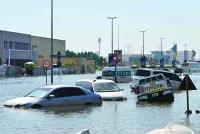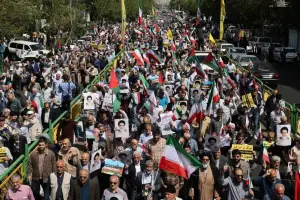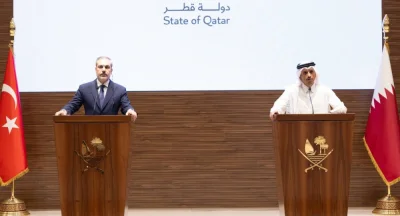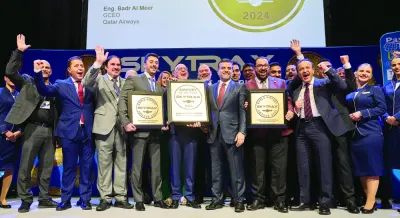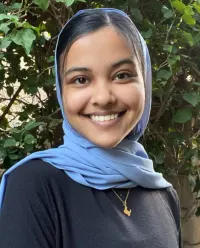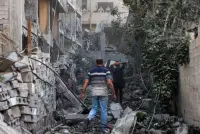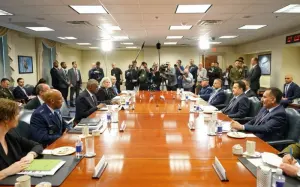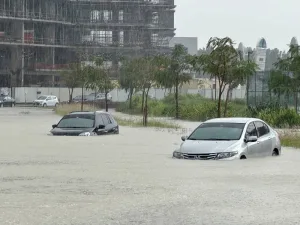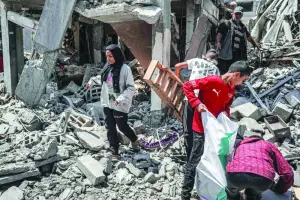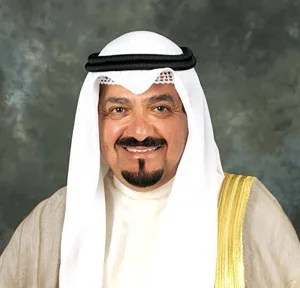Sitting around a fire in the hills of the Israeli-occupied West Bank, Ibrahim Abu Alyah and some friends stood watch over his herd in the aftermath of a settler attack on their village.“We are here so that we can put away the sheep and tell people to protect their homes in case settlers come,” Abu Alyah said.After 14-year-old Israeli herder Benjamin Achimeir went missing on April 12 in the nearby illegal settler outpost of Malachi Hashalom, dozens of settlers raided his village of Al-Mughayyir, north of Ramallah.Armed with rifles and Molotov cocktails, they set houses ablaze, killed sheep, wounded 23 people and displaced 86, according to the UN’s Office for the Coordination of Humanitarian Affairs, OCHA.One Palestinian was also killed in the violence.Abu Alyah, a shepherd, lost “20 or 30 sheep” and the cash he made from selling milk products when his house was set alight.Al-Mughayyir’s mayor, Amin Abu Alyah, said the settlers, who were part of the search party for Achimeir, burnt “everything they found in front of them” including houses, a bulldozer and vehicles.Several citizens tried to organise protection committees to defend themselves from raids, but were prevented from doing so, he said.“We currently have more than 70 prisoners inside Israeli prisons on charges of joining protection committees or trying to form an organised body,” he said.In the nearby village of Duma, five kilometres north of Al-Mughayyir, old fears came true when hundreds of settlers came down through the surrounding fields on Saturday.That day, Achimeir’s body was found bearing marks of a stabbing attack. People watched powerless as settlers rampaged through the village.“Hundreds of settlers entered the village followed by more than 300 Israeli soldiers who stormed the village and declared it a closed military zone,” said Suleiman Dawabsha, head of Duma’s village council.Mahmud Salawdeh, a 30-year-old iron worker whose house was torched in the attack, felt vulnerable when he realised the soldiers were not stopping the attack.“We feel helpless because we are unable to protect ourselves, and the settlers are protected by the army,” he said. “I lost all my money and my future,” he added from the ground floor of his charred house on the outskirts of Duma, near the fields the attackers came through.At his feet, burnt furniture and shattered glass covered the floor, while walls black with soot served as a reminder of the firebombs thrown at the building.His workshop in the adjacent room was torched, charred remnants of old tools lay around, while a large wooden box where he had been raising 70 chicks was now empty. The incident opened old wounds for Duma residents, who still remember the tragedy that struck the Dawabsha family.In 2015, the family’s home was set ablaze by a settler extremist, killing the couple and their toddler, and leaving only one surviving member, four-year-old Ahmed Dawabsha.
Region
Thursday, April 18, 2024
Thursday, April 18, 2024
Friday, April 19, 2024
Sunday, April 14, 2024
Tuesday, April 09, 2024
Tuesday, April 09, 2024
Israel destroyed thousands of frozen Gaza IVF embryos
Wednesday, April 17, 2024
Amir of Kuwait appoints Sheikh Ahmed Abdullah Al-Ahmad Al-Sabah as Prime Minister
Monday, April 15, 2024
Saudi Defense Minister, US Defense Secretary discuss developments in the region
Monday, April 15, 2024



